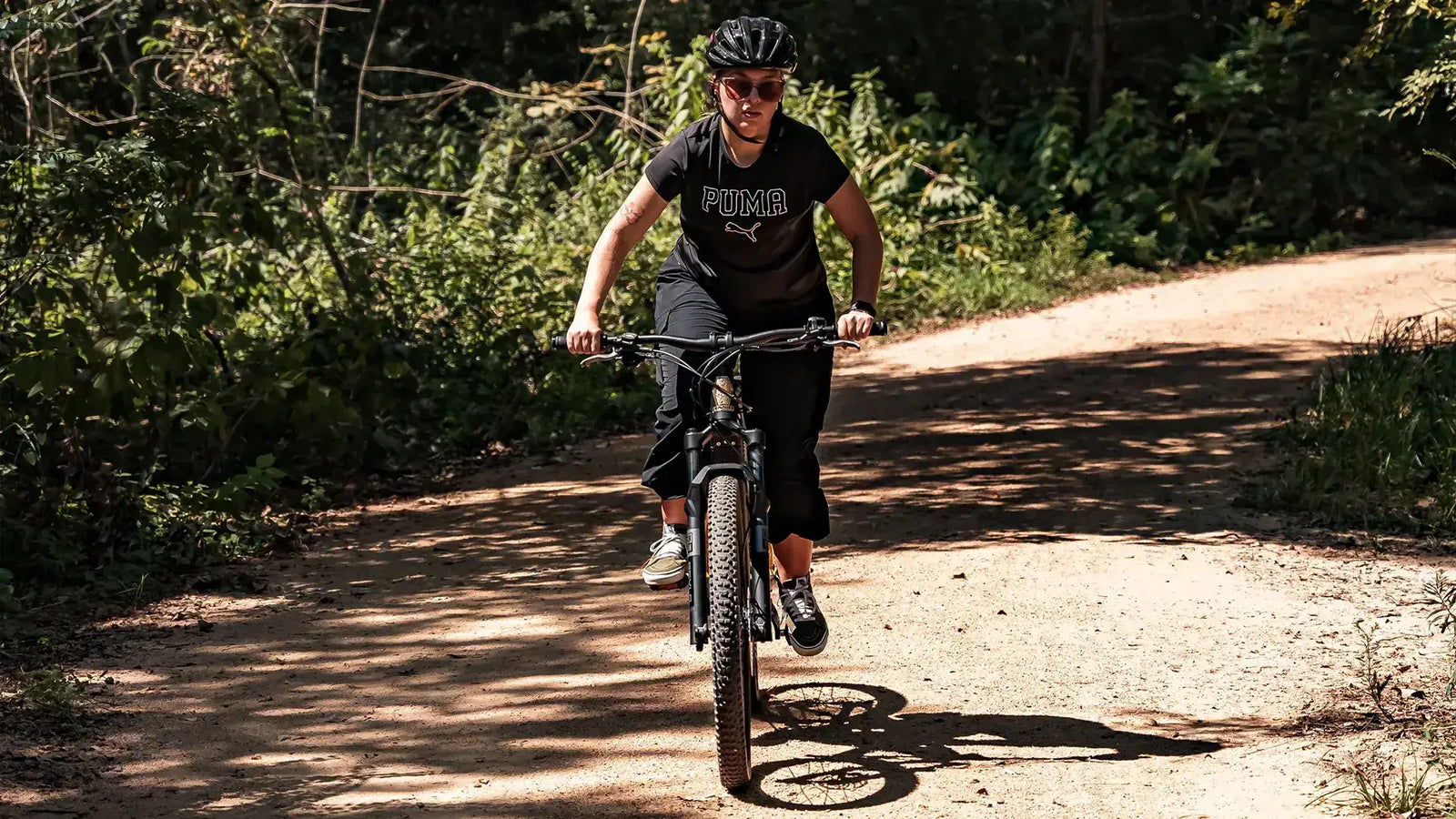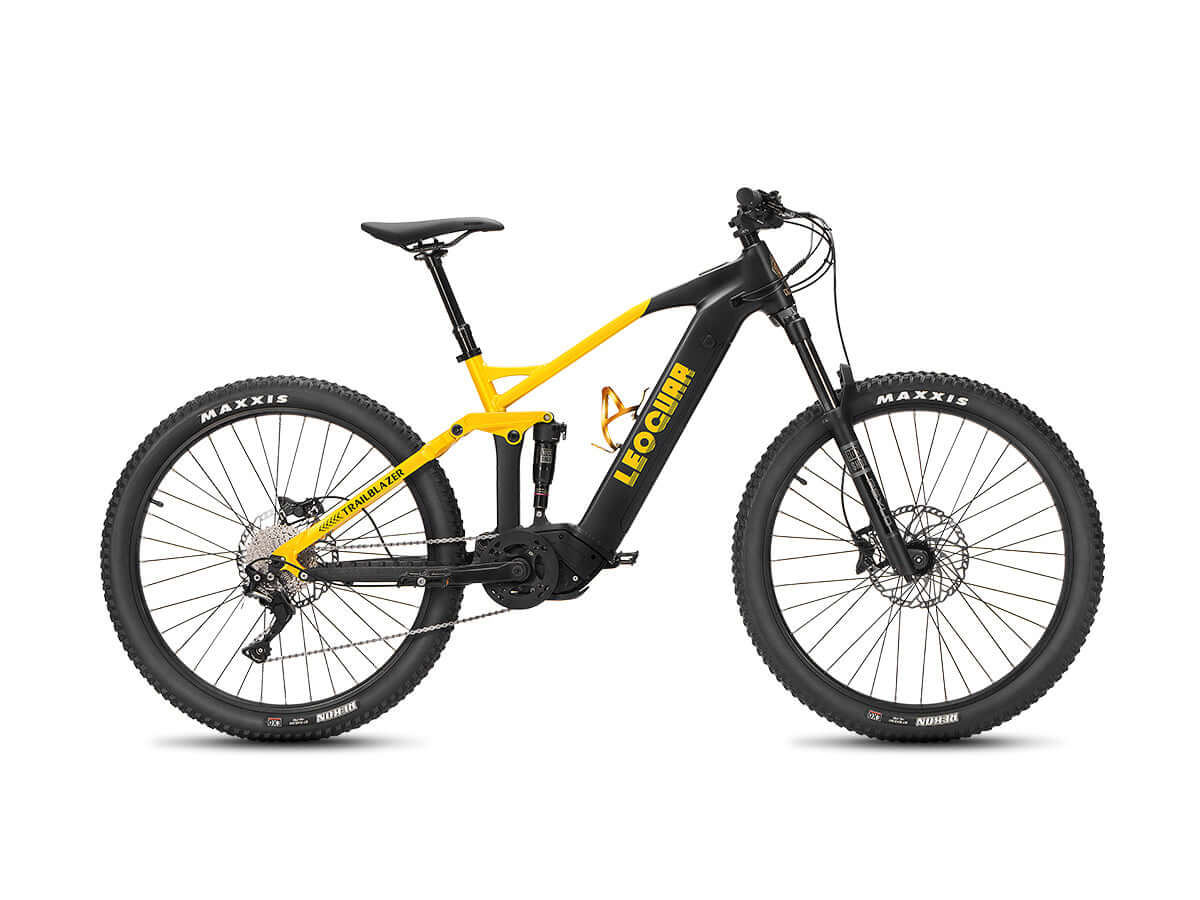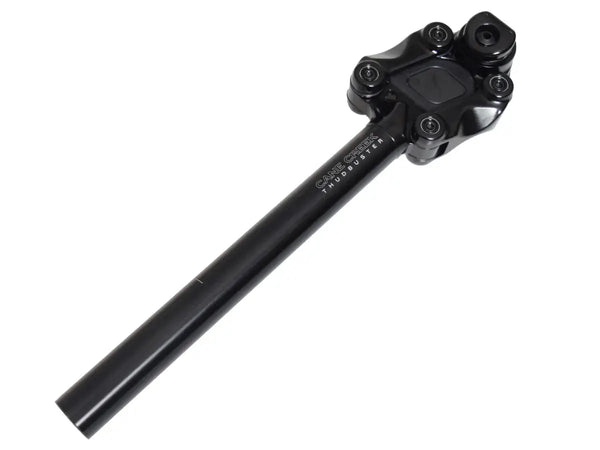
Bike Seat Suspension Post on an EMTB: Does It Actually Make a Difference?
The Short Answer
Yes, a bike seat suspension post makes a big difference on an EMTB, especially for certain types of riders and terrain. But let's be clear about what that difference is. This upgrade isn't about transforming your hardtail into a full-suspension rig or adding more big-hit capability to your existing dual-suspension bike.
The change is entirely focused on seated comfort and reducing fatigue. A bike seat suspension post absorbs the high-frequency vibrations and small, sharp bumps that cause discomfort, not to handle large drops or rock gardens. Think of it as a filter for trail chatter, gravel buzz, and broken pavement—the kind of constant vibration that wears you down on a long ride. It allows you to stay seated, maintain power, and finish your ride feeling fresher. This article will explore why this is uniquely helpful for EMTB riders, how the technology works, and how to choose the right one for your bike.
Why Add More Suspension?
This is the most common question we hear, especially from riders on full-suspension EMTBs: "My bike already has 150mm of travel. Why would I need more at the seat?" It's a valid question that comes from a misunderstanding of the two systems' jobs. They serve entirely different purposes. Frame suspension, whether it's a front fork or a full-suspension system with a rear shock, is designed for the bike's performance. Its primary roles are:
- Keeping the tires stuck to the ground for maximum traction and control, especially while cornering and braking.
- Absorbing large-scale impacts like roots, rocks, and drops to prevent the bike from being unsettled.
As you can learn from how modern mountain bike suspension designs work, this system is most effective when your weight is off the saddle, in a neutral or "attack" position.
A bike seat suspension post, on the other hand, is designed for the rider's comfort. Its only function is to separate your body from the frame, specifically when you are seated. It smooths out the small, constant vibrations that frame suspension isn't designed to remove. The simplest comparison is this: Frame suspension is for the bike's handling and control. A seat post suspension is for your body's endurance and comfort.
| System | Primary Function | Target Impacts | Key Benefit |
|---|---|---|---|
| Frame Suspension | Wheel-to-ground contact | Large impacts (rocks, drops) | Improves bike control & traction |
| Seat Post Suspension | Rider-to-saddle isolation | Small vibrations (chatter, buzz) | Reduces rider fatigue & discomfort |
How Suspension Posts Work
At their core, these are sophisticated components that add a layer of mechanical compliance between you and the bike. While there are many variations, they primarily fall into two categories based on their mechanism.

1. Telescopic (Plunger) Design
This is the most straightforward design. The post moves straight up and down along its own axis, much like a miniature version of your bike's suspension fork. Internally, it uses a combination of a coil spring, air spring, or elastomers to provide the cushioning.
- Pros: The design is simple, strong, and generally more affordable. It's a proven concept that gets the job done effectively.
- Cons: These designs can sometimes suffer from "stiction"—a slight initial resistance to movement—which can make them less sensitive to the smallest vibrations. As the post compresses vertically, it also slightly changes your effective saddle-to-pedal distance, though this is often unnoticeable for most riders.
2. Linkage (Parallelogram) Design
This is a more complex and often higher-performance design. It uses a set of pivots and linkages to allow the saddle to move. Instead of moving straight down, the saddle travels down and slightly backward in an arc.
This path is significant because it more closely mimics the natural path of the rear wheel as it moves up and over a bump. This allows the post to react more freely and efficiently to impacts.
- Pros: Linkage designs are known for their exceptional sensitivity to small bumps and a virtually stiction-free feel. They do a better job of maintaining a consistent distance between the saddle and pedals throughout their travel.
- Cons: The added complexity of the pivots and linkages means these posts are typically heavier, require more maintenance over the long term, and come with a higher price tag.
Real-World EMTB Scenarios
Theory is one thing, but how does a bike seat suspension post feel on the trail? As riders who spend hundreds of hours on EMTBs, we can tell you it's a noticeable difference. Here's a breakdown of how it impacts common EMTB situations.
Scenario 1: The Long, Seated Fire Road Climb
This is where the unique nature of EMTB riding makes a suspension post shine. Unlike on a traditional bike where you might stand to power over rough sections, the EMTB motor encourages you to stay seated and spin a steady, efficient cadence.
- Without a suspension post: Every small rock, washboard ripple, and embedded root is a small punch transmitted directly to your lower back and sit bones. After 30 minutes, you feel a dull ache. You find yourself shifting your weight constantly or standing up just to get a moment of relief, which breaks your rhythm and wastes energy.
- With a suspension post: The post acts as a filter. That constant, high-frequency "buzz" from the gravel is erased. Your body remains stable and quiet while the post beneath you works to absorb the chatter. We find it allows us to stay seated comfortably for the entire climb, conserving energy, reducing lower back fatigue, and letting the motor work at its most efficient RPM. It's the difference between ending a 1-hour climb feeling beat up versus feeling fresh.
Scenario 2: Rolling, Chunky Singletrack
On rolling trails with a mix of smooth sections and patches of roots and rocks, a suspension post changes how you apply power.
- Without a suspension post: When you see a moderately chunky section ahead, your instinct is to get out of the saddle. You coast through it, absorbing impacts with your legs, and then sit back down to pedal when the trail smooths out. This is effective, but it means you're not pedaling through sections where you could be.
- With a suspension post: You can remain seated and pedal through many of those same sections. The post takes the sharp edge off the small, square-edged hits from embedded rocks and roots. This allows you to maintain momentum and deliver consistent power, making your ride smoother and faster overall. It helps you absorb persistent small bumps and vibrations that would otherwise force you to stand.
Scenario 3: The Hardtail EMTB Commuter
For those using a hardtail EMTB for commuting or urban riding, the benefits are immediate and obvious.
- Without a suspension post: City streets are a minefield of jarring impacts. Pothole edges, cracked pavement, manhole covers, and dropping off curbs are harsh events that send a shockwave right through the frame to the rider.
- With a suspension post: The post acts as a critical comfort buffer. It transforms those sharp, jarring hits into firm, controlled compressions. It takes the "sting" out of the urban environment, making the ride significantly smoother, more comfortable, and ultimately, more enjoyable.
Choosing the Right Post
Selecting the "best" bike seat suspension post isn't about finding a single top product; it's about matching the post's features to your specific needs. For an EMTB, the considerations are slightly different than for a lightweight gravel bike. Here are the key factors we tell people to consider.
Key Decision Factors
Rider Weight and Tuning: This is the most important factor. Suspension posts are tuned to work within specific weight ranges. You must calculate your total "system weight"—your body weight plus the typical gear you ride with (pack, water, tools). Manufacturers provide different spring rates or elastomer densities to match these weights (e.g., 70-90kg, 90-110kg). Using the wrong one will result in a post that is either too harsh or bottoms out too easily.
Travel Amount: How much suspension do you need?
- Short Travel (20-35mm): This is ideal for most EMTB riders on fire roads, gravel, and light singletrack. It's enough to filter out road buzz and small bumps without feeling vague or "bouncy" during hard pedaling.
- Long Travel (40-50mm+): This offers maximum comfort and is best suited for hardtail riders on very rough terrain or riders who are highly sensitive to impacts. The trade-off can be a slightly less connected feel to the bike.
Mechanism Type: Referring back to our earlier section, your choice here depends on your priority. If you want the absolute best small-bump sensitivity and are willing to pay a premium, a linkage/parallelogram design is superior. If you're looking for a strong, cost-effective solution, a quality telescopic post is an excellent choice.
Compatibility: This is where many buyers make mistakes. You must verify three things:
- Seatpost Diameter: Measure your bike's internal seat tube diameter. Common sizes for EMTBs are 30.9mm and 31.6mm, but 34.9mm is also becoming common. If a post you want isn't available in your size, high-quality shims can be used to adapt a smaller post (e.g., a 27.2mm post in a 30.9mm frame), but a native fit is always best.
- Dropper Post Integration: This is a critical consideration for modern EMTB trail riding. You have to decide. Do you want a dropper post or a suspension post? Some innovative products, like the PNW Coast or Vecnum Nivo, combine both dropper and suspension functionality. For most, it's a choice of one or the other.
- Saddle Bag/Rack Compatibility: The movement of some suspension posts, particularly linkage designs, can interfere with large bike saddle bags or certain rear rack mounts. Check the clearance before you buy.

Downsides and Trade-offs
A balanced view is essential. While we are big supporters of these posts for the right rider, they aren't without their compromises.
- Added Weight: A suspension seatpost is heavier than a rigid alloy or carbon post. The weight penalty is typically in the range of 300-500g or more. On a heavy EMTB, this is less of a concern than on an acoustic race bike, but it's still added mass.
- Cost: Quality models from brands like Cane Creek, Redshift, or Kinekt are a significant investment, often costing as much as a good set of tires or brakes.
- Maintenance: It's another moving part on your bike. Telescopic posts require occasional cleaning of the stanchion, and linkage posts have bushings that will eventually wear and require replacement to eliminate play.
- Potential for "Bobbing": While modern designs have minimized this, some riders are very sensitive to the feeling of slight vertical movement when pedaling at a very high, smooth cadence. Some posts can have an overly plush ride feel that performance-oriented riders may not appreciate, though this is less of a concern for the average trail rider.
The Final Verdict
So, is a seat post suspension worth it for your EMTB? The answer comes down to your riding style, your bike, and your primary goal. It's a game-changing upgrade if you are focused on maximizing seated comfort and reducing the fatigue that comes from long hours in the saddle.
- It's a must-have if... you ride a hardtail EMTB on anything other than perfect pavement. It's the single best comfort upgrade you can make. It's also a must-have for any rider (on a hardtail or full-suspension) who suffers from lower back pain or gets beaten up on long gravel or fire road climbs.
- Consider it if... you have a full-suspension EMTB but find yourself spending a lot of time on long, seated climbs or rolling terrain. If you end rides feeling more fatigued in your back and joints than in your legs, a suspension post can make a world of difference.
- You can probably skip it if... your EMTB use is primarily for shuttling yourself to the top of aggressive downhill tracks where you spend almost the entire descent with your dropper post slammed and your weight off the saddle. In this case, your frame suspension is doing all the important work.
Frequently Asked Questions
1. Q: Can I use both a dropper post and a suspension post on my EMTB?
A: Generally, you have to choose one or the other. However, some manufacturers like PNW and Vecnum make posts that combine both dropper and suspension functionality. These hybrid posts offer the best of both worlds but come at a premium price.
2. Q: How much travel do I need in a suspension seatpost for EMTB riding?
A: For most EMTB riders, 20-35mm of travel is ideal. This provides enough cushioning to filter out road buzz and small bumps without feeling bouncy during hard pedaling. Hardtail riders on very rough terrain might benefit from 40-50mm+ of travel.
3. Q: Will a suspension seatpost work with my bike's frame geometry?
A: Most suspension seatposts are compatible with standard seat tube diameters (30.9mm, 31.6mm, 34.9mm). However, you need to check clearance for saddle bags or racks, especially with linkage-style posts that move in an arc rather than straight up and down.
4. Q: How often does a suspension seatpost need maintenance?
A: Telescopic posts need occasional cleaning of the stanchion, similar to a fork. Linkage posts require more maintenance over time as bushings wear and may develop play. Most quality posts will run trouble-free for thousands of miles with basic care.
5. Q: Is the weight penalty of a suspension seatpost significant on an EMTB?
A: Suspension seatposts typically add 300-500g compared to a rigid post. On a heavy EMTB that already weighs 50+ pounds, this weight increase is minimal and the comfort benefits usually outweigh the small weight penalty for most riders.










































Leave a comment